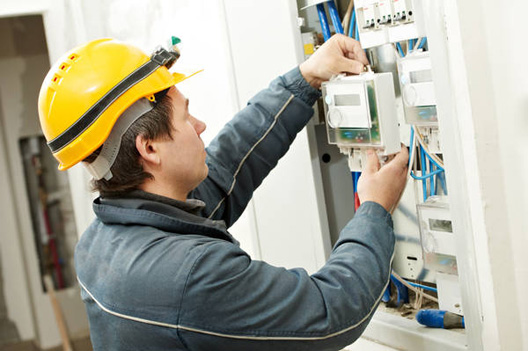Infrastructure & devices
When setting up a smart grid project one needs to determine the proper combination of technical aspects like smart meters, monitoring functionalities, data processing algorithms, in-house displays and other infrastructural communication devices.

How to create a consumption baseline - In order to calculate the effect of the smart grid, actual energy consumption needs to be compared to a baseline; the consumption if the smart grid initiative was not present. This guideline introduces different methods for creating such baselines.
How to estimate your load shifting potential - How to make a rough estimation of the consumer potential for peak levelling savings and electricity energy shift from limited input data? The associated MS Excel tool Peak reduction and energy shift calculation is intended for demand response service providers. It is recommended to have a general knowledge of peak levelling.
How to monitor demand response performance - In this guideline monitoring energy consumption in smart grid environments is discussed. Next to this it focuses on how the monitored data can be used to present as feedback to the consumer.
Introducing demand side management to SMEs - How can aggregators and energy companies approach small and medium sized enterprises (SMEs) and engage them into the demand response (peak levelling and electrical energy adaptation) programmes? The tool Questionnaire for engaging SMEs can support you in this process.
Introducing smart appliances - Here you can learn about the potentials of connecting appliances to a smart grid, and their possible functions and benefits in doing so. Based on an extensive analysis of smart grid projects, it reports success factors for implementing smart appliances.
KPIs for energy consumption effects - How can key performance indicators (KPIs) be used for determining the effect of the smart grid environment on the energy consumption of the users? This guideline describes how you can apply KPIs for the purposes of providing consumer feedback and project evaluation.
Optimizing the meter installation process - The installation of smart meters allows suppliers to build a close relationship with customers. This guideline supports project managers (DSOs, other metering operators or third parties) in designing, developing and controlling a user-friendly meter installation process.
Predicting effects of renewable energy integration -This guideline presents a five-step guide to determine the (technical, economic, environmental, etc.) effects of the integration of renewable energy on the current energy system.
Privacy and data protection - What should be taken into account when dealing with privacy, data protection and personal data storage? This guideline provides an overview of recommended measures and methods that help preserve the user’s data protection rights.
Smart meter monitoring and controlling functionalities - This guideline highlights the functionalities available in smart meters and provides advice on how and when to use them depending on different target groups and technical constraints.
Using flexibility manually or automatically - Although no strict rules apply on how to choose one over another, different types of flexibility each have their own merits. This guideline is aimed at project managers and product developers who investigate ways and means to help consumers shift their energy consumption.
Contents
How to create a consumption baseline
How to estimate your load shifting potential
How to monitor demand response performance
Introducing demand side management to SMEs
Introducing smart appliances
KPIs for energy consumption effects
Optimizing the meter installation process
Predicting effects of renewable energy integration
Privacy and data protection
Smart meter monitoring and controlling
Using flexibility manually or automatically



